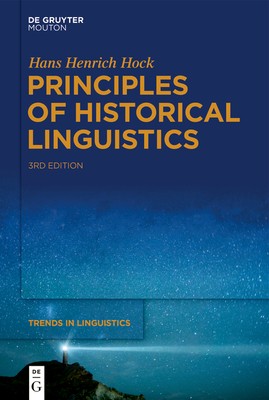
- We will send in 10–14 business days.
- Author: Hans Henrich Hock
- Publisher: Walter de Gruyter
- ISBN-10: 3110746328
- ISBN-13: 9783110746327
- Format: 15.6 x 23.4 x 5.7 cm, hardcover
- Language: English
- SAVE -10% with code: EXTRA
Reviews
Description
Historical linguistic theory and practice consist of a large number of chronological "layers" that have been accepted in the course of time and have acquired a permanence of their own. These range from neogrammarian conceptualizations of sound change, analogy, and borrowing, to prosodic, lexical, morphological, and syntactic change, and to present-day views on rule change and the effects of language contact. To get a full grasp of the principles of historical linguistics it is therefore necessary to understand the nature of each of these "layers". This book is a major revision and reorganization of the earlier editions and adds entirely new chapters on morphological change and lexical change, as well as a detailed discussion of linguistic palaeontology and ideological responses to the findings of historical linguistics to this landmark publication.
EXTRA 10 % discount with code: EXTRA
The promotion ends in 16d.18:50:02
The discount code is valid when purchasing from 10 €. Discounts do not stack.
- Author: Hans Henrich Hock
- Publisher: Walter de Gruyter
- ISBN-10: 3110746328
- ISBN-13: 9783110746327
- Format: 15.6 x 23.4 x 5.7 cm, hardcover
- Language: English English
Historical linguistic theory and practice consist of a large number of chronological "layers" that have been accepted in the course of time and have acquired a permanence of their own. These range from neogrammarian conceptualizations of sound change, analogy, and borrowing, to prosodic, lexical, morphological, and syntactic change, and to present-day views on rule change and the effects of language contact. To get a full grasp of the principles of historical linguistics it is therefore necessary to understand the nature of each of these "layers". This book is a major revision and reorganization of the earlier editions and adds entirely new chapters on morphological change and lexical change, as well as a detailed discussion of linguistic palaeontology and ideological responses to the findings of historical linguistics to this landmark publication.


Reviews